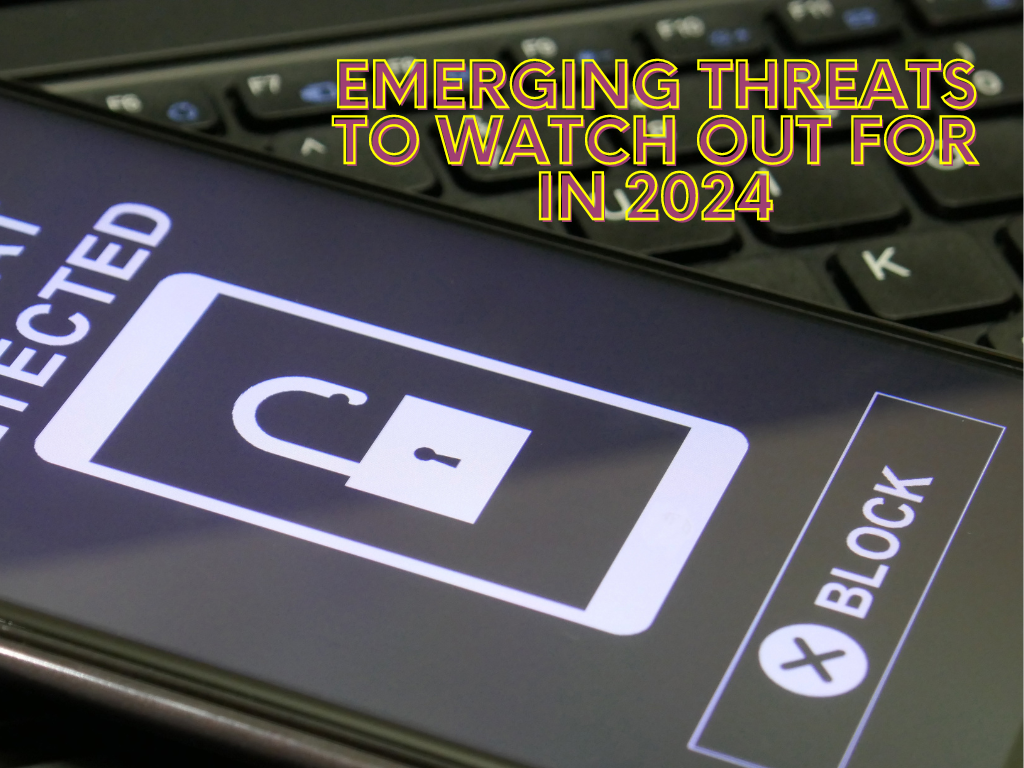The pace of technological evolution has reached an unprecedented speed, shaping every facet of our lives. As we dive deeper into the digital era, the landscape of technology continues to evolve at a rapid pace. While exciting advancements bring convenience and innovation, they also pave the way for emerging threats that demand our attention.
In this blog, we'll explore the potential technology threats that may pose challenges in 2024 and how to stay vigilant in the face of these evolving risks.
What are the Emerging Threats to Watch Out for in 2024?
- Deepfake Proliferation: Deepfake technology has advanced significantly, raising concerns about its potential misuse. In 2024, we may see an increase in convincing deepfake content, including manipulated videos and audio recordings. This poses risks to personal and organizational reputations, making it crucial to implement robust authentication and verification mechanisms.
- Quantum Computing Risks: While quantum computing holds immense promise for solving complex problems, it also threatens the foundations of current encryption methods. As quantum computers become more accessible, the risk of cryptographic vulnerabilities increases. Organizations must explore quantum-resistant encryption methods to safeguard sensitive data.
- 5G Network Vulnerabilities: The rollout of 5G networks brings unparalleled speed and connectivity, but it also introduces new attack surfaces. With an increased number of connected devices and expanded attack vectors, securing 5G infrastructure becomes paramount. Expect a focus on developing robust security protocols to counter potential threats.
- AI-Powered Cyberattacks: Artificial Intelligence (AI) is not just a defense tool; it's increasingly being utilized by cybercriminals for more sophisticated attacks. Automated, AI-driven threats can adapt and evolve rapidly, making traditional cybersecurity measures less effective. Organizations must invest in AI-driven security solutions to stay ahead of the curve.
- Biometric Data Exploitation: The widespread use of biometric data for authentication brings forth new privacy and security concerns. Threat actors may target databases containing biometric information, leading to identity theft or unauthorized access. Stricter regulations and enhanced security measures are necessary to protect biometric data.
- Supply Chain Cybersecurity Risks: As technology ecosystems become more interconnected, supply chain vulnerabilities become a major concern. A breach in one component of the supply chain can have cascading effects on various organizations. Strengthening supply chain cybersecurity through thorough assessments and continuous monitoring is crucial.
- Ransomware Evolution: Ransomware attacks continue to evolve in sophistication and scale. In 2024, we may witness more targeted and coordinated ransomware campaigns, potentially impacting critical infrastructure. Robust backup strategies, employee training, and enhanced cybersecurity measures are essential to mitigate the risk of ransomware attacks.
- Smart Device Exploitation: The proliferation of Internet of Things (IoT) devices introduces new avenues for cyber threats. Insecure smart devices can be exploited to gain unauthorized access to networks or launch attacks. Ensuring the security of IoT devices through regular updates and adherence to best practices becomes imperative.
- Cyber-Physical Attacks: With the increasing integration of technology into critical infrastructure, the risk of cyber-physical attacks rises. Threats targeting essential services such as power grids, transportation systems, and healthcare infrastructure may have far-reaching consequences. Implementing robust cybersecurity measures and contingency plans is essential to protect against such threats.
- Augmented Reality (AR) Vulnerabilities: As AR technologies become more prevalent, the potential for malicious exploitation also grows. From privacy concerns to location-based attacks, AR vulnerabilities may surface. Developers and users alike should be aware of these risks and prioritize secure AR application development and usage.
- Social Engineering in Virtual Spaces: With the rise of virtual and augmented reality spaces, social engineering attacks may evolve to exploit users in immersive environments. Awareness and education regarding virtual social engineering tactics will be crucial to prevent unauthorized access and information manipulation.
Conclusion
As we embrace the opportunities brought forth by emerging technologies, it's equally important to remain vigilant against potential threats. Staying informed, investing in advanced cybersecurity measures, and fostering a culture of security awareness are key steps in navigating the evolving tech landscape in 2024. By addressing these emerging threats head-on, we can collectively create a safer and more resilient digital future.

Leave a comment!